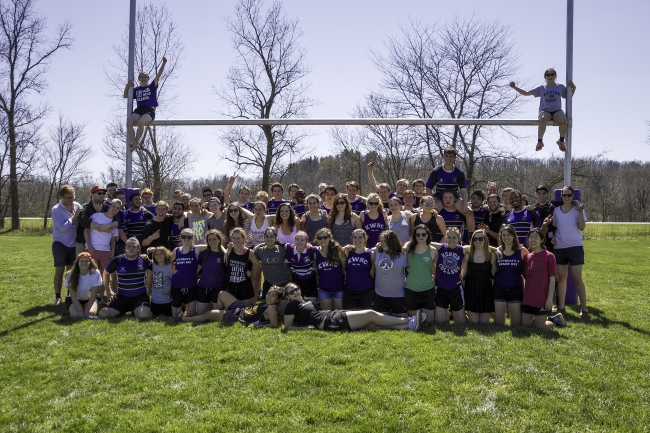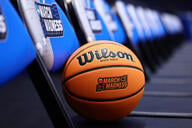You have /5 articles left.
Sign up for a free account or log in.

Kenyon rugby alumni
Kenyon College has reported five concussions among its varsity athletes this year. Its men’s and women’s club rugby teams have almost double that number.
Nine concussions were recorded this year between the two teams, and “that set off alarms, fairly loud alarms,” said Meredith Bonham, vice president for student affairs. Both teams' activities have been suspended as the private liberal arts institution reviews safety procedures for the team at a time of increased attention surrounding contact sports and their link to concussions and brain damage.
“The decision to suspend them was completely based on health and safety concerns that we had for those teams,” Bonham said.
However, there were also indicators that the teams might not be fulfilling the best practices set by the insurance policy covering them, provided by Educational & Institutional Insurance Administrators.
Among the best practices -- which are guidelines, and not formal requirements for coverage -- is having athletic trainers at every game. While Kenyon provides athletic trainers for home games, the college realized that it wasn’t sure if athletic trainers were being provided by other institutions during away games.
“If something truly catastrophic happened, it would be hard to justify why we weren’t following those guidelines,” Bonham said.
“We don’t know whether we are sending our students off to matches at other institutions where they have that same [athletic trainer] requirement. There are some issues at the league level we need to address, or certainly discuss.”
Bonham maintained that the college moved to “hit pause” on the teams because of the high rate of concussions, rather than the insurance policy guidelines, which had changed over the summer and were discovered after the college started scrutinizing the program.
The insurer had deemed rugby a “very high-risk” sport over the summer, Bonham said. A representative from the insurer was not available for comment.
Rugby has sometimes been lauded as a safer alternative to football, which has seen dropping popularity among youth leagues due to concerns about links between the sport and chronic traumatic encephalopathy, a concussion-linked brain injury. However, links between concussions, CTE and rugby have also been documented.
Varsity sports, by their nature, have more resources available, while club sports tend to be more student-led. The football team, for example, brings an athletic trainer along for its away games and also has athletic trainers at practices. It also has a paid, professional coach, unlike the rugby team.
“Speaking to our rugby student athletes, they weren’t necessarily enthusiastic about the idea of having an adult coach for the team,” Bonham said, adding that having a more structured coaching staff might be a necessary change going forward. “They really wanted this to be a student-driven organization. But you get to a point where … we as administrators have an obligation to step in and say, ‘We hear you, but these are steps we need to take.’”
“I really want to support the program, but I can’t support the program given the rate of concussions,” she said.




